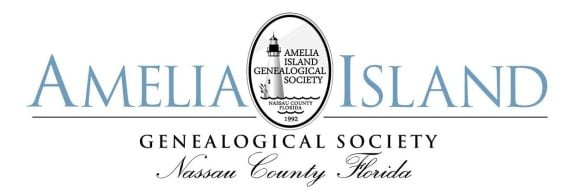In March 1862, a Union fleet of some 26 vessels under the command of Navy Flag Officer Samuel F. DuPont arrived at Fernandina from its base at Port Royal, South Carolina. Confederate troops had been withdrawn in the face of this overwhelming Union force and both Fernandina and nearby Fort Clinch were captured without violence. Most of the community’s residents also fled the island for Confederate held areas in the interior. For the remainder of the war, Fernandina was a center of operations for the Union Navy’s South Atlantic Blockading Squadron, a rest center for Union troops, and a base for Union raiding expeditions into the adjacent areas of Florida and Georgia.
After this occupation, Fernandina became a haven for Unionist refugees and escaped slaves from Florida and Georgia.
On the 8th day of December 1864 Captain John H. Brinker, who was a captain of the 107th Ohio Volunteers, and the Provost Marshall for Fernandina, completed a census of the the civilian population under the protection of the Union Army in Fernandina. This was part of a larger census ordered for the east coast of Florida including Jacksonville, Fernandina and St. Augustine.
During the Civil War, Confederate-owned slaves who sought refuge in Union military camps or who lived in territories that fell under Union control were declared “contraband of war”. This policy was first articulated by General Benjamin F. Butler in 1861, in what came to be known as the “Fort Monroe Doctrine,” established in Hampton, Virginia. By war’s end, the Union had set up 100 contraband camps in the South. Many adult freedmen worked for wages for the Army at such camps, teachers were recruited from the North for their schools by the American Missionary Association, and thousands of freedmen enlisted from such camps in the United States Colored Troops to fight with the Union against the Confederacy. Therefore, it is an important link for blacks who haven’t established their family background.
This is an important document for several reasons; it lists the last place of residence and the date of arrival in the area, as well as the previous owner of the “Contraband” (the term used to describe freed slaves) living in Union controlled areas before the Emancipation Proclamation. This census does not contain many of the names of early residents of Fernandina as most of them left, going to other areas ahead of the arrival of Union Troops. The names used in this census may not be exactly the same as the name used by the family today, so we encourage experimentation with similar sounding names to find the family, or exploration using the pagination. The names of the prior owners listed may be approximations of the real name heard for the first time by a census taker. It is searchable by last name, given name, age, census page number, and census row. It is initially sorted by page and row from lowest to highest, but you can sort by any column.
This document came to us through Edith Mixon of Jacksonville who discovered it in the National Archives. The individual pages were written on both sides and “four folded”, so that creases can be seen in the copies. These data was originally published in the first three volumes of the The Nassau County Genealogist by Jean Mann, who has also copied them into a format that could be used in our online database. It was integrated into our database to make it more available to individuals who might have ancestors who were in Fernandina during this critical period.

I need assistance locating the parents of Laura Hooper (1834). Her former owner was Margaret Starratt/Stennett. Laura’s husband was Moses Hooper (1832). His former owner was William Eubanks/Youbanks. Also Sam Hooper aka Isadon Hupue had a native american wife. How can I find her? Thank you and kind regards.